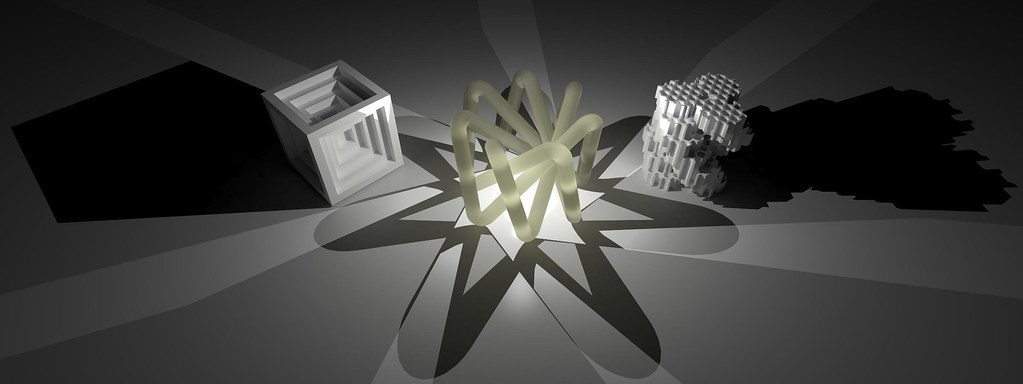And...this is it. Kind of scary really that I've reached the very end of one of my favourite courses. Yes it was hard at the start, yes the programs were a nightmare to learn quickly. But actually looking back, it was all absolutely worth it.
Definitely do Digital Creation if you ever get the chance. You will and at the same time won't regret it.
Anyway, this project here for me was all about the mathematical, analytical side of design. Inspired by an illusionistic Grecian façade based on simple forms, I extrapolated out the difficulty and complexity of that form. The idea of something being impossible when you look at it front on in two dimensions, but it then being completely possible in three dimensions has been absolutely at the core of this project.
The notion that something can be so simple, while hiding a massive degree of complexity is how I created my form. If you look at it and dissect it into its most basic forms, it is simply a circle that has been extruded along a complex path. But the way this path intertwines and overlaps itself is what makes this design stand out. Deceptive simplicity, all derived from a series of simple mathematical equations, values and vectors.
My render deals with the idea of a product shot, and a "perfect" composition. I tried to perfectly balance the image with the structuring of the models, as well as balancing the shadows all around the models. The duality of the shadows, and the resulting overlaps forms a dark, evocative scene that speaks of a dynamic, translucent model with a material that immediately connects the model with the render.
The Final Render
The elements that I tried to capture in my photos were meant to be a juxtaposition to the render. While in the render I tried to create as much of a product shot as possible, in the photographs, I made a much more obvious link with the projects design and it's mathematical roots, while exploiting an emotional tie to the model itself.
The sketchbook detailing the derived angles and inflections in the design just makes sense as a stage. Mathematics doesn't change. The interior angle of a heptagon will always be 128.571 degrees, and this was what I was trying to convey in the second shot. Mathematics doesn't change, it can only change in the way it is expressed.
In some respects, the way I designed the model is almost representative of the way data can be presented visually. If you pare it back to the basic data and vectors that create the shape, it is presenting the data for a specific type of heptagonal star in a 3-D, tangible space.
For the first and third photos, I tried to capture both elements of craft and elements of rhythm that exist in my design. Craft is interesting, as the whole point of 3-D printing (in my eyes) is that is removes the element of craft. Something is machined, it's always going to be the same, and yet I've refined my model further by applying a degree of craft to it. Sanding parts of the model in one way and then other parts an alternate way has given the project a dynamic element of craft that results in a unique visual experience of the layers being featured and hidden mere millimetres away from each other.
Image 1
Image 2
Image 3
I'm really proud of this project! :3





No comments:
Post a Comment